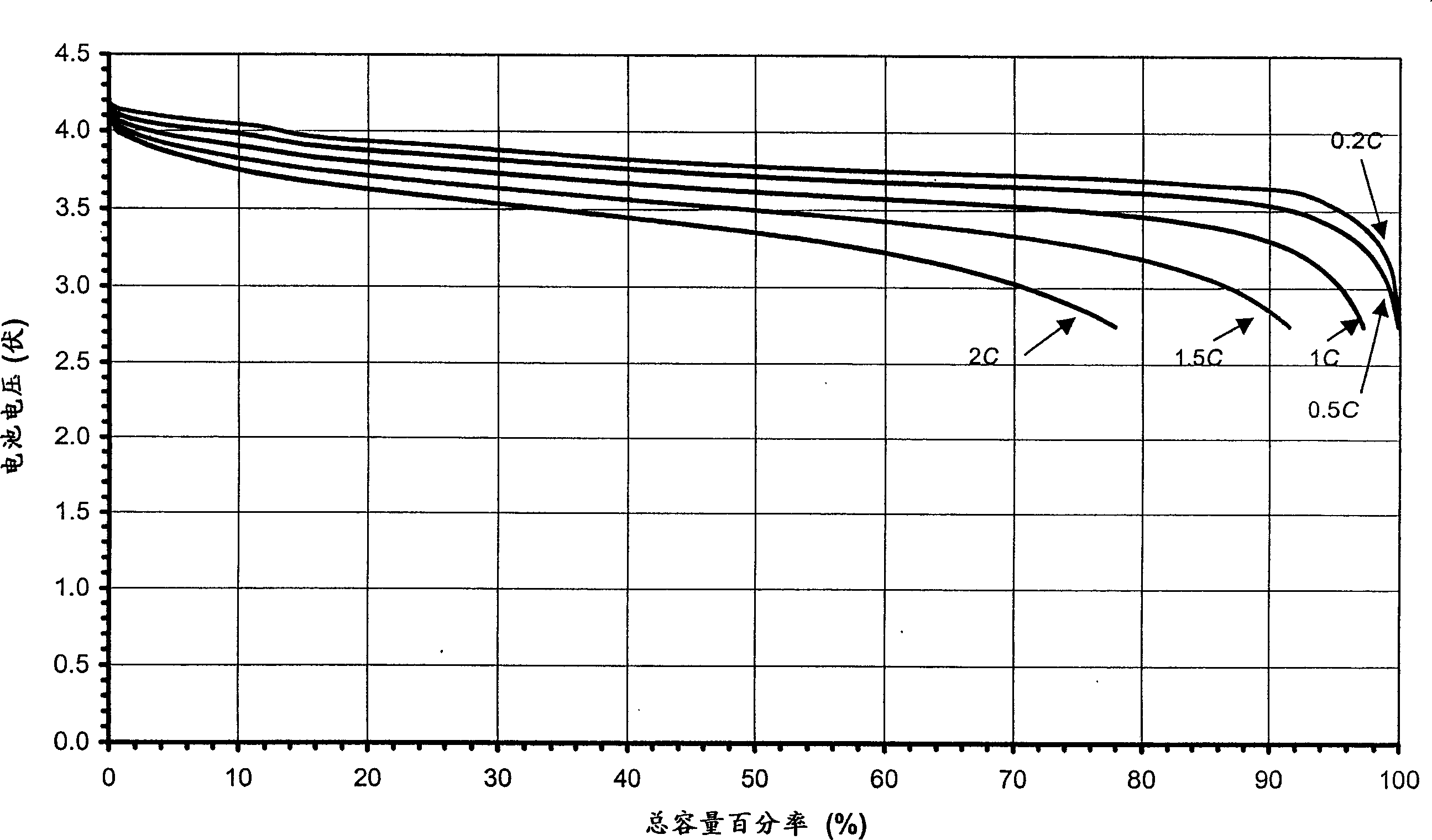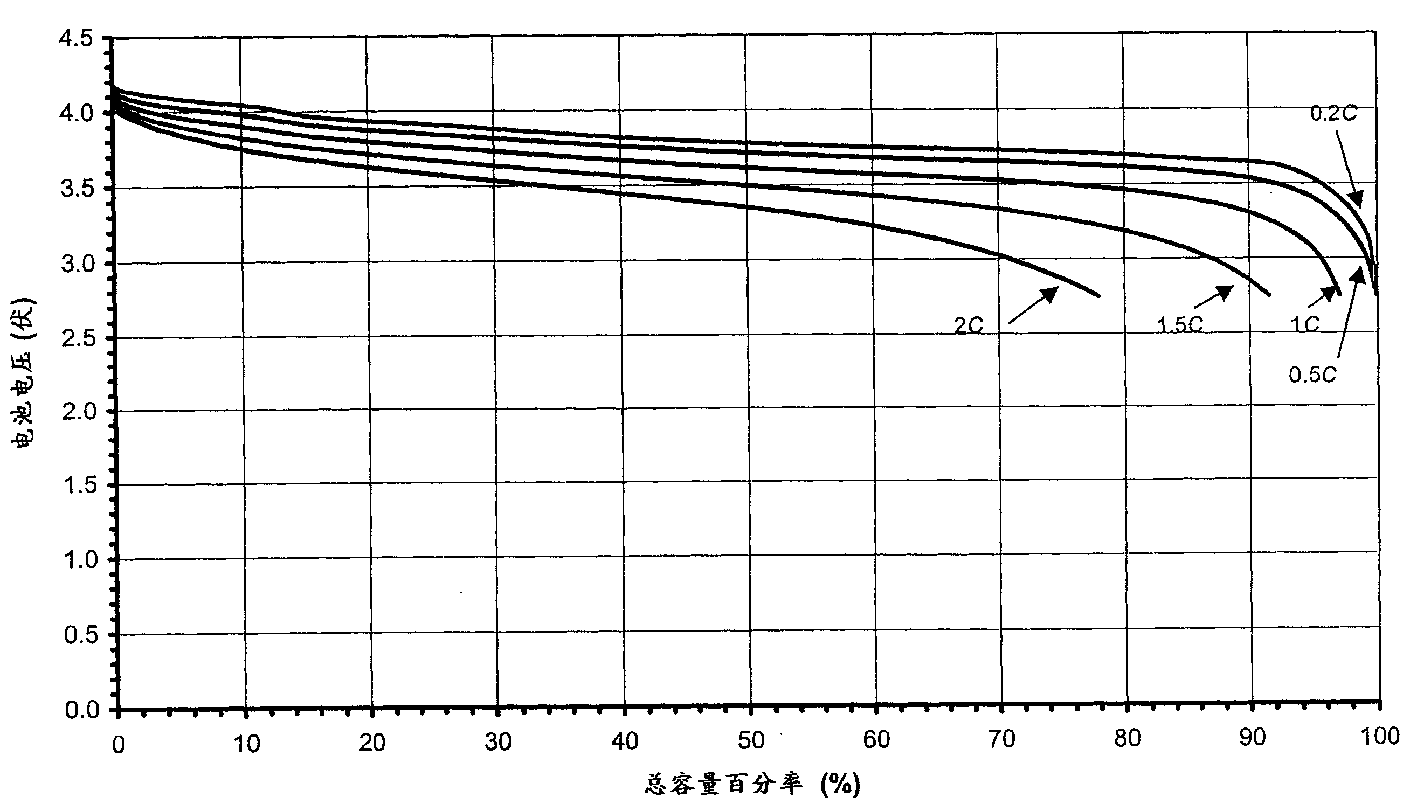Heat activated microporous membrane and its application in battery
A microporous membrane and battery technology, applied in the field of microporous membranes, can solve the problems of variable battery quality, low battery high-current charge and discharge performance, serious problems, etc.
- Summary
- Abstract
- Description
- Claims
- Application Information
AI Technical Summary
Problems solved by technology
Method used
Image
Examples
Embodiment 1
[0040] A microporous membrane was prepared as follows. 0.90 g of poly(ethylene-vinyl acetate) "PEVA-50" containing 50% vinyl acetate, 0.36 g of Escorez® 2596 (aromatized modified aliphatic hydrocarbon resin), and 4.14 g of polysulfone (Mw. 80,000) produced by Scientific Polymer Products (Ontario, NY) were dissolved in 40 g of tetrahydrofuran "THF". Another 1.00 g of fumed silica was added to the above solution. After stirring overnight, 7.00 g of lithium bromide "LiBr" was added to the resulting slurry. After the lithium bromide had completely dissolved, the slurry was coated directly onto a 4 inch by 15 inch Mylar(R) (polyethylene terephthalate) film support at room temperature. Coating thickness is controlled at about 200 microns. The whole pot of slurry can coat 10 pieces. At room temperature, tetrahydrofuran evaporates within about half an hour. After the tetrahydrofuran was completely volatilized, the obtained membrane was immediately soaked in water for 1 hour. The...
Embodiment 2
[0042] This sample is listed in Table 1, Sample No. 2. It was prepared according to the method of Example 1 above with the same formulation and substantially the same materials. The difference was that Escorez(R) 5690 (cycloaliphatic hydrocarbon resin) manufactured by Exxon-Mobil Chemical Company (Houston, TX) was used in place of Escorez(R) 2596 (aromatized aliphatic hydrocarbon resin).
Embodiment 3
[0044] Sample No. 3 was prepared from substantially the same slurry as in Example 2. The difference is that "PEVA-50" is replaced by poly(ethylene-vinyl acetate) "PEVA-70" containing 70% vinyl acetate.
PUM
| Property | Measurement | Unit |
|---|---|---|
| particle size | aaaaa | aaaaa |
| particle size | aaaaa | aaaaa |
| size | aaaaa | aaaaa |
Abstract
Description
Claims
Application Information
 Login to View More
Login to View More - R&D
- Intellectual Property
- Life Sciences
- Materials
- Tech Scout
- Unparalleled Data Quality
- Higher Quality Content
- 60% Fewer Hallucinations
Browse by: Latest US Patents, China's latest patents, Technical Efficacy Thesaurus, Application Domain, Technology Topic, Popular Technical Reports.
© 2025 PatSnap. All rights reserved.Legal|Privacy policy|Modern Slavery Act Transparency Statement|Sitemap|About US| Contact US: help@patsnap.com



